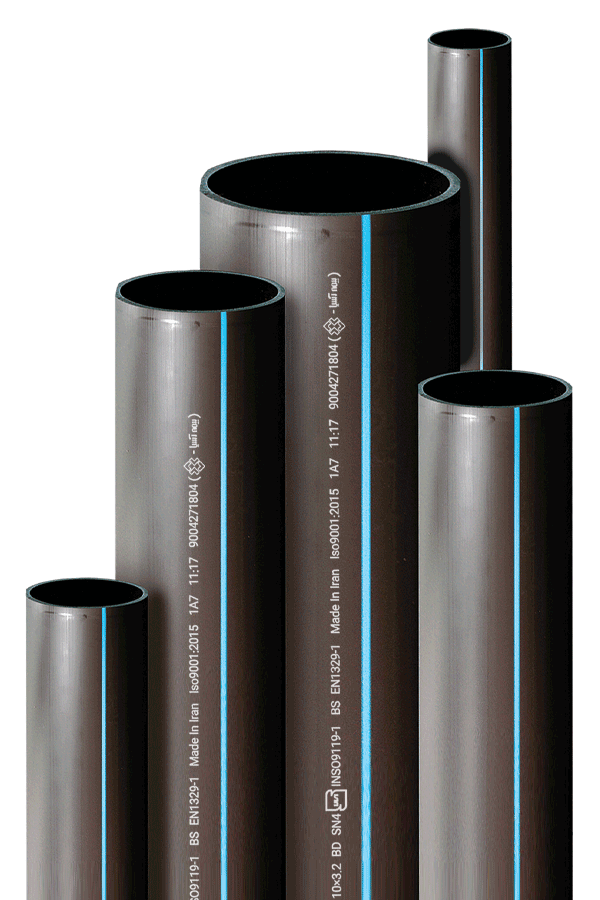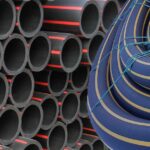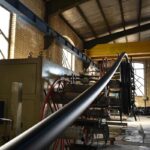Introduction to different types of polyethylene
- Article
- Introduction to different types of polyethylene

- July 4, 2023
- 9:02 am
Introduction to different types of polyethylene
One of the most important and wide applications of polyethylene is using it to make different types of polyethylene pipes since this incredible polymer has unique characteristics and features that make it suitable for making different types of pipes. Some of these characteristics are as follows:
- Polyethylene pipes have a desirable resistance against possible impacts. This is due to the incredible characteristic of the polymer used in the manufacturing of polyethylene pipes. These material becomes extremely contracted in dangerous situations such as a risk of breaking.
Contraction adds to their resistance and prevents breaking of the pipes. This characteristic makes them suitable to use in areas with a high risk of earthquake.
- The next characteristic of polyethylene is related to their structure. These nonpolar hydrocarbons have a high molecular mass and this makes them resistant to possible dangers. Theses dangers include chemical attacks, oxidation, and chlorinated and aromatic hydrocarbons. In addition to this, these materials have incredible resistance against acids and bases.
- These pipes can stand temperature levels between -50 and 60 degrees. In temperatures out of this range the tensile strength of the pipes will fall.
- Like all plastic and natural materials all types of polyethylene pipes are vulnerable to sunlight. That is why carbon black is used in polyethylene pipes to protect them against UV lights.
A close look into different types of polyethylene pipes
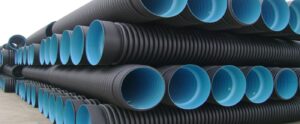 Types of polyethylene pipes
Types of polyethylene pipes
Different types of polyethylene pipes are as follows:
- PEX pipes
- PERT pipes
- Single wall pipes
- Irrigation pipes
- Double wall corrugated pipes
Introduction to PEX pipes
PEX pipes are one type of polyethylene pipes. These pipes are made of a polyethylene network and have a medium to high density. This structure makes the pipes resistant to pressure and temperature. This level of resistance in turn increases the service life of the pipe in the long run. You need to know that PEX pipes are made of five layers which makes them the best choice to use in cold and hot water supply networks.
These pipes were also used in hydronic heating systems in Europe for decades. In addition, PEX is a suitable choice for use in residential fire sprinklers. These pipes are also used in fresh water supply systems, solar thermal panels, distribution lines, etc.
PERT pipes
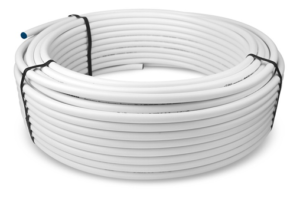 PERT pipes
PERT pipes
PERT pipes are other types of polyethylene pipes with a wide variety of application. They are used in residential and commercial cold and hot water supply systems. These types of pipe are also suitable to use in places like building walls, floors, and ceilings as the main components of underfloor heating and cooling systems.
In addition, PERT pipes are used in radiators, HVAC systems, and other water service lines such as CTS and IPS. It is good to know that grades used in the molecular structure of theses pipes are designed to activate chains in higher temperatures.
It is important to note that double bonds in these polymers are capable of producing crystalline structures. These structures improve different functions of the material such as stress crack resistance, chemical resistance, and better function in higher temperatures.
Single wall polyethylene pipes
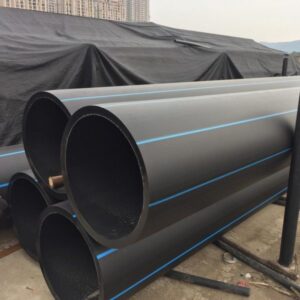 Single wall polyethylene pipe
Single wall polyethylene pipe
Single wall pipes are polyethylene pipes that are mainly used in gas and water supply and transfer networks. These pipes are manufactured in a variety of diameters and are able to resist pressures as high as 2 to 40 bars. These pipes are mostly used in drainage systems, sewer networks, and rural and urban water supply systems.
These pipes are also used in industrial wastewater networks, drip or pressurized irrigation and HVAC ducts. In addition, single wall polyethylene pipes are used in the coating of power cables and metal pipes, optical fibers, etc.
Double wall corrugated pipes
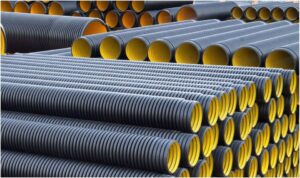 Double wall corrugated pipe
Double wall corrugated pipe
Double wall corrugated pipes are other types of polyethylene pipes. These pipes are of high density and have unique characteristics which makes them suitable for underground applications. Double wall corrugated pipes are cost-effective due to their light weight and low cost shipping and installation.
In addition, double wall corrugated pipes have a high stress crack resistance. This has made them easy to install and function in different projects. The structural stability of these pipes is due to being manufactured in C, S, and D models.
Double wall corrugated pipes are mainly used in sewage transfer, subsurface and storm drainage systems.
Irrigation pipes
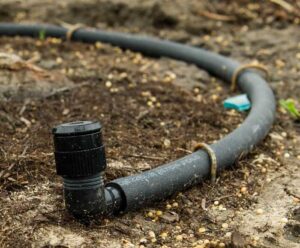 Irrigation pipe
Irrigation pipe
Irrigation pipes are other types of polyethylene pipes and include:
- Drip tapes or pipes or irrigation pipes
- HDPE or high density polyethylene pipes
- LDPE or low density polyethylene pipes
- Irrigation tapes
Drip tapes or irrigation pipes
Although this types of pipes are classified under single layer pipes, we list them as irrigation pipes to better explore the topic. As the name suggests, these pipes are used to water crops. Drip tapes are selected based on flow rate and emitter spacing.
However, although the usual spacing between vegetables is 12 inches, 8 or 4 inches are also acceptable. Drip irrigation systems should contain all the main components including main and sub-main lines, lateral lines together with drippers, control valves and hydrants.
HDPE or high density polyethylene pipes
 Different types of polyethylene pipes
Different types of polyethylene pipes
These types of pipes are made from high quality material and therefore have a long service life which is estimated to be 100 years considering the continuous running of the irrigation system and all its main and lateral lines.
These pipes are manufactured in coils with a diameter of 110 mms. The main advantage of manufacturing the pipes in coils is reduced connection costs such as welding. These pipes are mainly used in main and sub-main lines of irrigation systems.
LDPE or low density polyethylene pipes
LDPE pipes are another type of polyethylene pipes which are used in low pressure (2.5, 4, 6 bar) irrigation systems and have a diameter of 16 to 32 mms. The pipes used in drip irrigation systems have a service life of 10 to 15 years.
Irrigation tape
These pipes are easy to install and are mostly used in gardens, greenhouses, and agricultural lands. These pipes make optimal use of water resources possible and thus are suitable to use in deserts and arid lands. A variety of plants are cultivated using these types of irrigation pipes including plants used for industrial purposes, vegetables and summer crops, beans and all sorts of grains.

